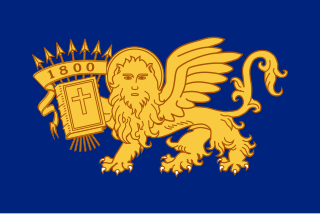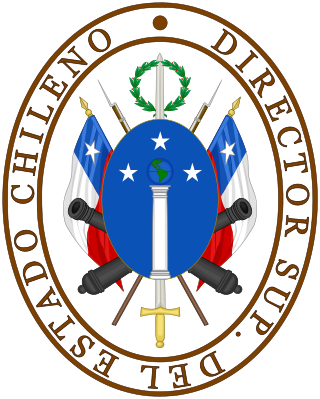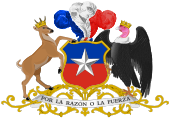A convention, also known as a constitutional convention, is an uncodified tradition that is followed by the institutions of a state. In some states, notably those Commonwealth states that follow the Westminster system and whose political systems derive from British constitutional law, most government functions are guided by constitutional convention rather than by a formal written constitution. In these states, actual distribution of power may be markedly different from those the formal constitutional documents describe. In particular, the formal constitution often confers wide discretionary powers on the head of state that, in practice, are used only on the advice of the head of government, and in some cases not at all.

The Governor-General of India was the representative of the monarch of the United Kingdom in their capacity as the emperor or empress of India and after Indian independence in 1947, the representative of the monarch of India. The office was created in 1773, with the title of governor-general of the Presidency of Fort William. The officer had direct control only over his presidency but supervised other East India Company officials in India. Complete authority over all of British territory in the Indian subcontinent was granted in 1833, and the official came to be known as the governor-general of India.

The Senate of the Republic of Chile is the upper house of Chile's bicameral National Congress, as established in the current Constitution of Chile.

The Illinois General Assembly is the legislature of the U.S. state of Illinois. It has two chambers, the Illinois House of Representatives and the Illinois Senate. The General Assembly was created by the first state constitution adopted in 1818. As of 2025, the current General Assembly is the 104th; the term of an assembly lasts two years.

Elections in Chile are held nationwide, including the presidency, parliament, regional offices, and municipal positions. Chilean citizens and foreign residents with legal residency of at least five years, who are 18 years or older on election day, are eligible to vote. Previously, voting was voluntary, but since 2023, it has become compulsory.

John Henninger Reagan was an American politician from Texas. A Democrat, Reagan resigned from the U.S. House of Representatives when Texas declared secession from the United States and joined the Confederate States of America. He served in the cabinet of Jefferson Davis as Postmaster General.

The Supreme Court of Puerto Rico is the highest court of Puerto Rico, having judicial authority to interpret and decide questions of Puerto Rican law. The Court is analogous to one of the state supreme courts of the states of the United States and is the highest state court and the court of last resort in Puerto Rico. Article V of the Constitution of Puerto Rico vests the judicial power in the Supreme Court, which by nature forms the judicial branch of the government of Puerto Rico. The Supreme Court holds its sessions in San Juan.

The Septinsular Republic, also known as the Republic of the Seven United Islands, was an oligarchic republic that existed from 1800 to 1807 under nominal Russian and Ottoman sovereignty in the Ionian Islands.

The Supreme Director of Chile was the Head of State and of Government of Chile in the periods of 1814 and 1817-1826.

The Constitution of the State of New Jersey is the basic governing document of the State of New Jersey. In addition to three British Royal Charters issued for East Jersey, West Jersey and united New Jersey while they were still colonies, the state has been governed by three constitutions. The first was adopted on July 2, 1776, shortly before New Jersey ratified the United States Declaration of Independence and the second came into effect in 1844. The current document was adopted in 1947 and has been amended several times.

The Constitution of Haiti was modeled after the constitutions of the United States, Poland and France. The latest version of the document was approved by Parliament in March 2011 and came into effect on June 20, 2012.

The Utah Supreme Court is the supreme court of the state of Utah, United States. It has final authority of interpretation of the Utah Constitution. The Utah Supreme Court is composed of five members: a chief justice, an associate chief justice, and three other justices. All justices are appointed by the governor of Utah, with confirmation by the Utah Senate. The five justices elect one of their own to serve as chief justice and another to serve as associate chief justice, each for a term of four years.

The Supreme Court is the highest court in the Kingdom of Spain. The court has original jurisdiction over cases against high-ranking officials of the Kingdom and over cases regarding the legalization of political parties. It also has ultimate appellate jurisdiction over all cases. The Court has the power of judicial review, except for the judicial revision on constitutional matters, reserved to the Constitutional Court.

The lieutenant governor of Louisiana is the second highest state office in Louisiana. The current lieutenant governor is Billy Nungesser, a Republican. The lieutenant governor is also the commissioner of the Louisiana Department of Culture, Recreation & Tourism.
Connecticut is known as "The Constitution State". The origin of this title is uncertain, but the nickname is assumed to be a reference to the Fundamental Orders of 1638–39 which represent the framework for the first formal government written by a representative body in Connecticut. Connecticut's government has operated under the direction of five separate documents in its history. The Connecticut Colony at Hartford was governed by the Fundamental Orders, and the Quinnipiac Colony at New Haven had its own Constitution in The Fundamental Agreement of the New Haven Colony which was signed on 4 June 1639.

Proposition 1F of 2009 was a measure approved by California voters relating to the salaries of state officers. It was an amendment of the Constitution of California prohibiting pay raises for members of the State Legislature, the Governor, and other state officials during deficit years. It was proposed by the legislature and approved in a referendum held as part of the May 19, 2009 special election ballot, in which the California electorate also voted on five other propositions.

The president of the Chamber of Deputies of Chile is the highest authority of the Chamber of Deputies of Chile. The office was established in 1811 by the First National Congress of Chile.

The Legion of Merit of Chile, frequently abbreviated to the Legion of Merit or the Legion, was a Chilean multi-class order of merit established on 1 June 1817 by Bernardo O'Higgins to recognise distinguished personal merit contributing to the independence of Chile or to the nation. Membership of the Legion conferred a variety of privileges in Chile and its members were entitled to wear insignia according to the class conferred. The Legion of Merit of Chile was abolished in 1825.

A referendum on Chile's provisional constitution was held on 27 October 1812. The provisional constitution, which was successfully adopted, was written by dictator José Miguel Carrera's administration. In the document, Chile declared itself sovereign, but recognized Ferdinand VII of Spain. It prohibited the then-current junta government from performing foreign commands, established a Senate with seven members, permitted only Roman Catholicism as the public and private religion, but recognized a number of other personal rights and freedoms.
The history of the Constitution of Chile dates from 1811. There were 10 constitutional texts and a draft for a federal organization in 1826. Its common elements are the unitary form of state and presidentialism as a form of government.
















